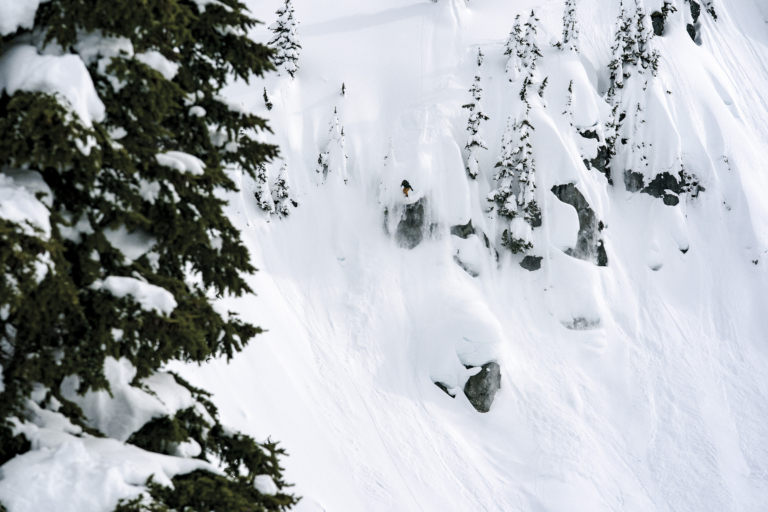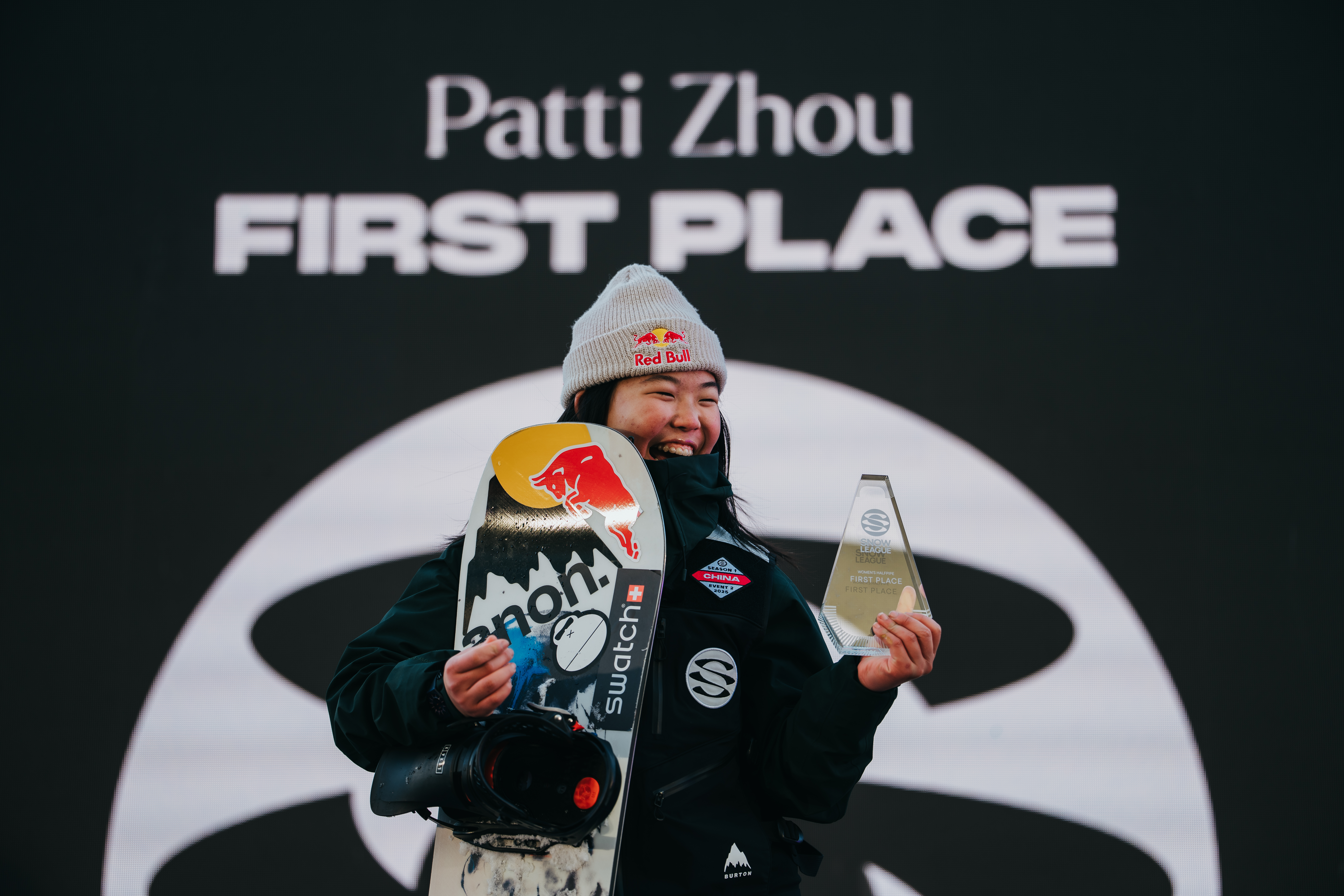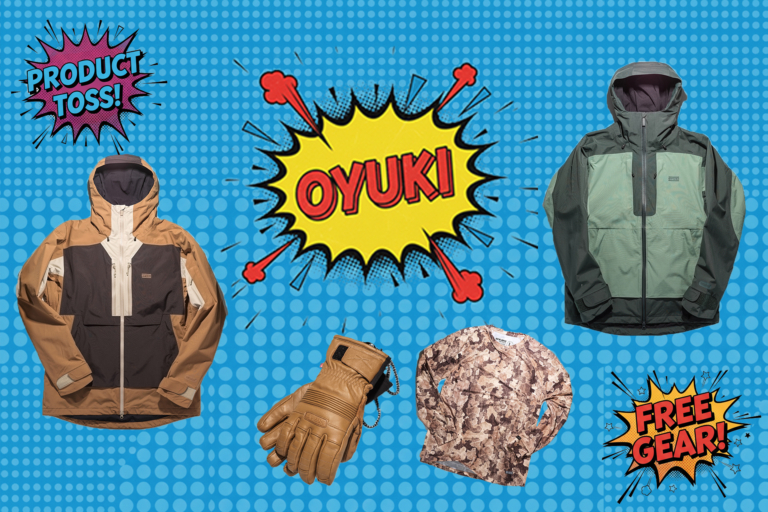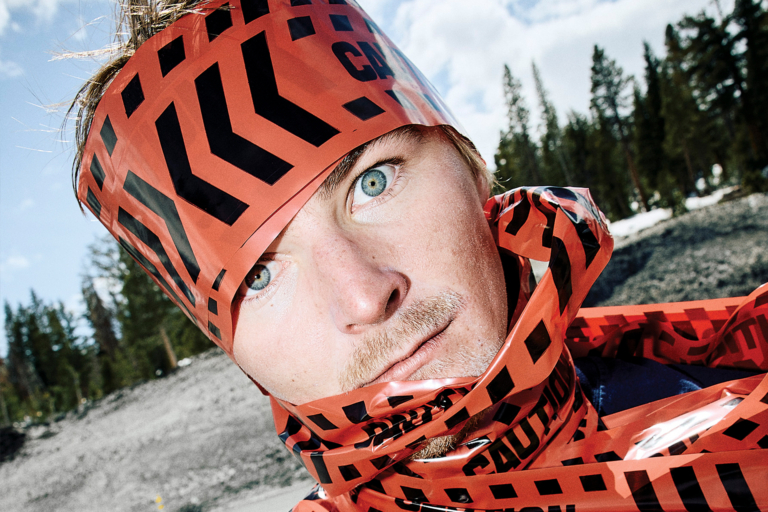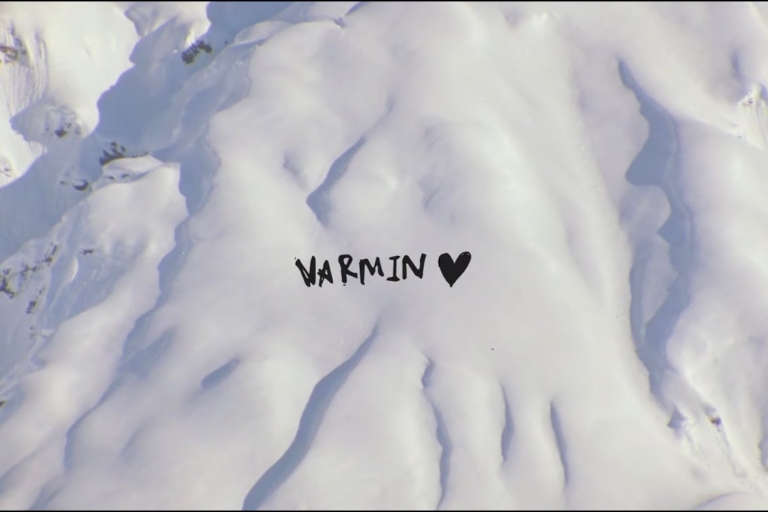Snowboarding has a ruthless tendency to chew people up. Maybe it’s a cyclical, insatiable hunger for the newest video, hottest style and most marketable promise child. There is one thing for certain: Eero Ettala has found a way to weather pretty much anything cast in his path. He has released critically acclaimed video parts, gotten past half a dozen knee surgeries, produced an award-winning web series, wore an X Games gold medal, maintained career-long sponsors, designed ten years of pro models… See what I’m getting at here? Eero has nearly done it all. Through his fifteen-year career, the Finn has earned almost every accolade imaginable, while staying humble through each new achievement. But motivations change. For Eero, this past season marked a point in his time as a professional snowboarder when he decided it was time to think about the present, as each passing day added another variable for the future. He won’t film another full video part. His new movie Ender will be his last, but by Eero’s tone and resolve, it may very well be his best.
Photos provided by Pasi Salminen, unless otherwise noted. Photo above and portrait by Silvano Zeiter
Watch the trailer for ENDER: The Eero Ettala Documentary
[aesop_image img=”https://snbd-media.s3.us-east-2.amazonaws.com/wp-content/uploads/2015/08/13215744/eero-ettala-ender-snowboarding-for-web.jpg” credit=”Photo: Silvano Zeiter” align=”center” lightbox=”off” captionposition=”left”]
Let’s start at the beginning. How did you start snowboarding?
I was with my twin sister at my local sledding hill in Finland on just a little plastic sled. My buddy was riding down with a snowboard and I asked him if I could try, so got my sister’s moon boots, put them on, rode down once and I liked it so much that when I got home that night, I told my parents that I needed to get my own snowboard. Winter holiday from school was actually happening the next day, so before we drove to my grandma’s place, we picked up a snowboard from a sporting goods store. For the first season, I had a board for my sister and myself to share. Half of the days I would have to ski and I got to snowboard for the other half. The first season went by like that, then I couldn’t take it anymore and refused to ski. So I started asking my parents and they got me my own snowboard for my next season. Then I got a season pass, began riding more and meeting friends on the hill. That’s where it all started.
How old were you?
I must have been 11 years old. That’s still the time when it was really rare to see snowboarders on the hill. In those years you started to see them more, but it was still pretty new to Finland.
When did you meet other Finnish riders like Heikki Sorsa, Eero Niemela or Iikka Backstrom?
Iikka was one of the first guys I met. I met him through skateboarding, then we started snowboarding together. I must have been 12-years-old. Then there were a bunch of other guys riding that same resort, Vihti — Lauri Heiskari, Eero Neimela, and some other guys. We just tagged along and started riding together. It’s funny to see a bunch of those guys all made it to a pro level.
[aesop_quote type=”block” align=”right” quote=”The first couple years I didn’t really understand what it meant to film a video part.”]
It is crazy how all you guys turned out to be insane riders. To an extent, that generation from Finland took over snowboarding for a time. Why do you think that was?
All of us were somewhat competitive in some way. We would always ride as a group and play this game like follow the leader. Someone would do a trick and then everyone else would have to do it. If one of us would learn a trick, everyone else would learn it the same day. So we would push each other all the time. Riding small resorts like we have in Finland, you get a lot of laps in every day and the night riding makes the weather really consistent. And when someone made it, we brought the other guys with us. So we helped each other in the long run too.
When did you start riding for Nitro?
2001.
[aesop_gallery id=”60091″]
What was your first part after that?
I grew up riding halfpipe, and back then it was really the only way to get noticed out of Finland, but when I got on Nitro they wanted me to start filming videos. They got me into this big European movie called Primeval. Mads Jonsson and I were filming for that, so we had the shared ending part. I also made a trip to the US and randomly hooked up with the Straight Jacket guys, like Kurt Heine and some other dudes, and I filmed some for them too. That first year I came out with a Straight Jacket part and a part in the European movie. From there, both Mads and I were invited to shoot with Standard Films. It all happened super fast.
I was still mostly in Finland shooting rails and would randomly get on trips that I was invited on. But just getting sponsored gave me the opportunity to travel. The first couple years I didn’t really understand what it meant to film a video part. I was randomly going someplace and snowboarding without thinking if I had a trick already or putting too much work or thought into it. But when the movie came out half a year later I was like, “Holy shit, I have a video part!” Some stuff I wouldn’t even remember doing.
So it was pretty loose.
Yeah it was pretty loose. I didn’t really have any guidance, no one told me what to do. Nitro just paid for me to get into these movies and then didn’t tell me where to go or what to do. I was just on a solo mission all the time anyway, or randomly tagging along with crews. I had no solid plan.
Who was a mentor to you? Or was there someone that influenced you when you were getting your career started?
One of the guys was Sami Hyry. He was the one that invited me to the summer camp where I was hooked up with Nitro and he used to be a pro for Burton. Then he fucked up his knees and started shooting photos. He took me under his wing and I was traveling with him a lot, just shooting photos. Basically he told me everything that he did wrong and tried to help me out to make everything right.
[aesop_gallery id=”60204″]
When did you start getting into a rhythm with what you wanted to do?
It was 2003, the first season I started filming with Standard. Everything felt professional. I would fly to the US and stay at Mike Hatchett’s place for three months at a time, then fly back home. It was a learning experience being with Mike and the Standard crew. Growing up watching all of their movies, Jussi Oksanen gave me the spark and understanding of how much work it takes. Being with them 24/7, living under the same roof, watching all of the transfer footage together when everything came in — they would say, “This shot is usable, this one isn’t.” That’s when I started understanding when I did a lousy job and I should have done that again. Especially when we were filming 16mm, it was way different. You needed to either trust your own instincts if you did something well enough, or ask the filmers. If you weren’t sure you just went up and did it again.
[aesop_quote type=”block” align=”left” quote=”I think it would be better if they put something out you knew it was going to be good, instead of going on the site and struggling to find the good stuff because there is so much shit on there.”]
What do you think was the year when you really put your head down and had some goals that you wanted to accomplish for the season?
That was the year of Follow Me Around. I had filmed with Standard for two years, then I got on Mack Dawg. The first year with them was pretty loose again; I was filming and traveling a lot, but didn’t really have a clear picture of what I wanted to do. Getting the opening part for Mack Dawg opened my eyes and I thought I was doing something right since I got the first part. Then it was way easier to go into the next season and do the same stuff I did last year, but try to do it better with better tricks
In my opinion, those Mack Dawg years were where it fully came together.
I definitely noticed the same. I wouldn’t say that my video parts were a ton better than the ones I had with Standard Films, but making the switch from Standard to Mack Dawg, I think people started noticing me more. Maybe Mack Dawg movies back then were more respected or more viewed. Those two first seasons shooting From _ With Love and Follow Me Around, I won Video Part of the Year for both parts. For my career, I think those were the years where I was definitely among the top riders in the world.
[aesop_image img=”https://snbd-media.s3.us-east-2.amazonaws.com/wp-content/uploads/2015/08/13215551/Eero_Ettala_JKL_MG_0605_Photo_PasiSalminen_com.jpg” align=”center” lightbox=”on” caption=”Jyvaskylä, Finland, 2008″ captionposition=”left”]
How was it different for you back then? Maybe in terms of attitudes, compared to filming a part now and looking back on those days, what set those years apart from now?
Since there was really only big movies with Absinthe, Standard Films and Mack Dawg, there weren’t that many riders to follow or people to copy. Now there are a ton of clips on YouTube or popping up on your Facebook feed; you see all of these new styles and tricks every day then stress about needing to learn something. The movie era was a lot easier. You would watch the movies then just try to take that trick and form it into something with a little tweak to make it your own. There are so many riders now fighting for the same spot — sponsors or viewers — so it gets a bit mixed up and lost on the internet. Back then there were ten or twelve riders in each movie. That means with Absinthe, Standard and Mack Dawg, there would be like 36 riders in the world that people would follow. Now it’s like 200 riders and I feel like everyone gets lost somehow.
There is definitely a ton of content coming out now.
Yeah I feel like a lot of the websites do a pretty lousy job with that — quantity over quality — it’s too much shit all the time. I think it would be better if they put something out you knew it was going to be good, instead of going on the site and struggling to find the good stuff because there is so much shit on there.
[aesop_gallery id=”60201″]
Tell me about the TV show you had.
Yeah, Tracking Eero — I got lucky with that one. Oakley had planned this [show] for Jake Blauvelt, but Forum was already making a team movie, so he wouldn’t have time to do it. So they asked me if I wanted to. I already had six years of filming video parts in the US before that, but I still felt like I needed to have a little change for motivation. When you film for the same company for a long time, you end up doing the same things — travel to the same places, hit the same jumps, hang out with the same crew. I remember getting on Mack Dawg and I was so hyped to see Jeremy Jones and all of these legends that I grew up watching. When I actually got to ride with them, I just wanted to one-up myself and show them what I could do. That lit the spark. But after four years of doing that with them, it didn’t have the same feeling anymore. Those first years I was trying to prove that I belonged there; that’s why I was trying so hard all of the time. But when you get the feeling that you’re already part of it, you get comfortable being there.
Being a European rider and a fixture on the roster of American films, do you think it made you stand out in the US? What was that like to come over to the American scene like that?
I wouldn’t get extra pressure, but I always knew that I needed to work extra hard to make it. Let’s say you go to a spot with Jeremy Jones and you both do something equally good, most likely Jeremy’s shot is going to be in the movie because you still don’t have that name to actually sell it. If you get that opportunity to fly to the US and film for a big production, you have to take advantage of it, ride as well as you can and try to one-up the guys that you’re riding with. When we would go to a spot, in my mind I always felt like I wanted and needed to do the hardest trick that I could. That brings out the competitiveness that I have in me, but in a good way. I feel like I always got the most out of myself and what I needed to make it.
I don’t really know what the real answer is though. I think there is just something in the riding and the personality that kids can relate to. Growing up, I was a big fan of Kevin Jones, Jussi Oksanen, and Travis Parker, all of the guys that actually had something more than just the tricks. That always stood out to me because I wanted to know more about the person. I think that was also one of the things that happened with my parts. It was always some cheerful music and funny shots mixed into banger action. Adding that mix of stuff, I think that made it a lot easier for people to relate to my riding and personality.
[aesop_image img=”https://snbd-media.s3.us-east-2.amazonaws.com/wp-content/uploads/2015/08/13215600/MG_7577_Photo_PasiSalminen_com.jpg” align=”center” lightbox=”off” caption=”Utah, USA, 2009″ captionposition=”left”]
How did skateboarding influence your snowboarding?
Skateboarding has definitely been one of my biggest influences. When I was younger I would probably watch snowboarding and skateboarding equally, but now, skateboarding is like 90 percent of my time spent watching something on the internet. It seems like it’s always one step ahead of snowboarding somehow — especially the urban riding. Sliding and grabbing your board, wallrides — that stuff all came way later into snowboarding. So I think following what’s happening in skateboarding is the easiest way to stay on top of what’s cool and the next trends. If something is already proven in skateboarding and people like it, most likely it’s also going to work in snowboarding.
You have been on Nitro since 2001; when did your first pro model come out?
I was riding my first pro model in Follow Me Around, which means it came out for the 2006/2007 season.
It’s been almost ten years.
Yeah, I was riding my tenth pro model this season. It comes out for 2016/2017.
That’s a long time to have a pro model. Can you think of any other riders who had one for that long?
I’ve been trying to think about this. I’m pretty sure that I’m the only rider that has had pro models for ten years in a row for one company. I’m sure there are riders that have switched and had pro models from here and there. It’s hard to say. Joni Makinen had a lot pro models — the infamous Finnish snowboarder. I can’t remember how many pro models he had, it must have been like twelve [he had eleven]. But he was riding for Joyride, Option and some other companies. So for just one board company, ten might be the record.
[aesop_gallery id=”60206″]
I think that says a lot about you and Nitro, especially when you look at how many companies still have pro models. There aren’t very many. So the fact that you have had one for ten years is pretty incredible.
I’m honored. The most rewarding feeling is to see someone else ride one and see that other people like the graphics or the board. So it’s great to be able to create something that also pleases people other than just myself.
[aesop_quote type=”block” align=”right” quote=”Looking back at Follow Me Around, every trick in the video brings out different memories. To watch them now is like walking Memory Lane”]
In terms of giving back to snowboarding, would you say that’s one of your proudest achievements? Or is it something else?
After I got sponsored and realized that snowboarding was becoming a job, getting a pro model was always a dream come true. So having ten of them, that’s probably the biggest achievement I’ve had in my career. At the same time, having those video parts lit up having those pro models. Each video part is like a diary. Looking back at Follow Me Around, every trick in the video brings out different memories. To watch them now is like walking Memory Lane.
How many knee surgeries have you had?
I’ve had six so far — three major ACL surgeries and three surgeries of cleaning up the cartilage or fixing up the meniscus. My knees have been my weak points.
Have you ever taken a year off?
No, I never really took a year off. In 2007, I blew out my knee in January, so even though my knee was fucked I rode until the end of the season to finish my video part without an ACL. I [blew it out] again in summer 2010; then I got it fixed and rushed it to get back on the hill. I was only on my board for a month and a half before I tore it again. During that time, I filmed half a video part for the Nitro movie. After that, I had surgery right away. I was in between making it work with the shitty knee again, going through the season for a couple more shots or going straight into surgery. Then I thought about how I’m getting a little bit older, my body shouldn’t be able to take the beating of riding with a bad knee. It was a good call; even though I had lots of knee problems afterwards. The next season, Heikki and I decided to do Cooking With Gas.
[aesop_parallax img=”https://snbd-media.s3.us-east-2.amazonaws.com/wp-content/uploads/2015/08/13215558/Eero_Ettala_bs180_70V0183_Photo_PasiSalminen_com.jpg” parallaxbg=”on” caption=”Espoo, Finland, 2010″ captionposition=”bottom-left” lightbox=”off” floater=”on” floaterposition=”left” floaterdirection=”up”]
You did three seasons of Cooking With Gas. How did that get started and how do you feel like those years went?
I was originally supposed to film for People for 2012. Pierre Minhondo was stoked to get me on the program. Then I was looking through the internet and Jake Blauvelt had a web series the year before that, and it seemed like he was getting a lot of exposure doing his own thing. It got me thinking. I was asking around about the People movie to a mixed response. I didn’t want to be one out of sixteen riders in a movie that people weren’t even going to see. Instead of being part of that, I called Heikki and told him we should try to do something together. We decided that for our careers, it was better to do something of our own rather than being part of something else. Heikki was totally fine with that. I think that was the biggest motivation behind it.
Are you proud of what you guys created? There are only a handful of really legit web series out there, and I think CWG is one of the best.
I’m definitely proud. A lot of people had doubts. Even Nick Hamilton from Transworld, who set up the deal for six webisodes, said that he thought it was going to be some B-grade bullshit. He didn’t know what to expect. We were some of the first guys putting out A-grade footage in a webisode two weeks after we filmed it. I think we started, whether it’s good or bad, the hype of putting out banger footage throughout the season. Some people weren’t happy with it, but that was just our decision to make. Since we were on top of the wave I think it was a really great thing for us to do. But I have a history of filming video parts, so I was used to saving my footage and keeping everything a secret. It was weird putting everything out right away.
Do you think there will be a revival of secretive footage again?
I hope so. That’s one of the reasons why I’m making my own movie. I realized that there is an overflow of webisodes on the internet and even if you produce something really quality, no one gives a fuck after the first day or two. If you make a movie it’s just going to live lot longer than a webisode. Webisodes are like the easy way out. You’re going to get a lot of clicks in a couple of days, rather than producing a movie really well, where it’s probably going to live for ten years. Still to this day, my favorite movie is Simple Pleasures. If I want to turn on something that gets me hyped, that’s the one I play. I’m rooting for the direction of quality over quantity now, since I’ve done the webisodes and realized what happened with that format. I think it was a good time to move away from that and make a full movie.
[aesop_image img=”https://snbd-media.s3.us-east-2.amazonaws.com/wp-content/uploads/2015/08/13215555/Eero_Ettala_onefooted_O9Q9425_Photo_PasiSalminen_com.jpg” alt=”Eero Ettala interview” align=”center” lightbox=”off” caption=”Rovaniemi, Finland, 2011″ captionposition=”left”]
[aesop_quote type=”block” align=”left” quote=”I would hate being the guy people look to like, fuck that guy is milking it, or he’s washed up or doing it for the money.”]
So what’s the plan for the new movie?
I’m never satisfied with the stuff that I produce or tricks that I do. The older I get, it’s just going to get harder for me to produce a video part that’s going to be better than the year before. I would hate being the guy people look to like, fuck that guy is milking it, or he’s washed up or doing it for the money. So I decided to make this my last video part and make it as good as possible; I wanted to be satisfied with it. I wouldn’t say I’m leaving the scene, but I want to have a nice ending for my video part era. I won’t have to prove myself in that aspect anymore and can move on to something else. For the past fifteen years, I’ve been waiting at my house for it to snow and as soon as it does, I’m somewhere hitting handrails — hardway 270s, back 270s, back lips and all of this stuff that I thought makes a big difference to have. But in the end, it’s all in my head. I keep doing the same thing over and over, trying to step myself up. It gets to a stage when you get older and not physically as strong anymore — it’s hard to do things better. It’s good to know that it’s my last video part because I’ll put all of my time, effort and motivation into this one to make it as good as I can.
It´s a 50-minute documentary by Pablo Films in co-production with Red Bull Media House. We have a big group of riders: Toni Kerkelä, Terje Haakonsen, Markus Kleveland, Aaron Biittner, Heikki Sorsa, Sam Taxwood, myself, Knut Eliassen from Nitro, Marko Grilc also had a couple of shots in there. I’m really satisfied with it all.
Looking at Arto Saari — he did gnarly shit for a long time — then it got to a point where he had just done it all. Now he skates bowls and shoots photos. I can see a lot of similarities here. There is a fine line between milking it and bowing out with grace.
I feel like I’m at that phase where I’m fighting against time. If I don’t do this project now, I might not get to do it. It could be next year or the year after, but in my head I was thinking if I got injured again, would I ever get to do this? I wanted to have a clean ending to everything. What I didn’t want to do was go full speed into the season and have people thinking [what I’m doing is] weak or not as good as it used to be. With the footage from this season, I’m satisfied. I think people watching it will be stoked, and I definitely don’t have regrets that I did it this way. I can still ride. I’m already planning projects for next season that would only take a week or two. I want to explore and do things that are out of the norm because I’ve been so caught up with going on trips where the basic idea is to stack as much A-grade footage as we can. I want to get out of that mindset and go places where we don’t know if it’s going to be any good — just go because it’s going to be exciting. If we score, we score. [If we don’t] it won’t be the end of the world. But if you’re filming a part it would be the end of the world to go on a trip for three weeks and not get any footage.
After this season, what do you want to do?
Nitro is planning to make a movie, and when I heard about it I thought, “Fuck, they probably want me to film a video part for it.” But we had a talk about it and they just want to make it about going on trips, which is perfect for me to go to cool places and ride with people I don’t get to ride with from the team. I think it will be a great season ahead of me and I’ll actually be able to ride more. Basically, the only time for me to ride in Finland is the early season at the resort, when there is no snow on the ground. But when the snow does fall, I’m usually too beat up after a night of riding street to go to the resort. It’s a circle I get caught up in. I’m just trying to get away from that idea of filming for my video part as soon as it snows. I’ve probably hit over a hundred different gaps, rails or walls in Finland, and it gets old. I’ve been to the spots, so why would I try to go back and one-up myself with another 180 or tailpress?
Is that going to be hard to let go of?
It could be. As soon the snow falls I might think, “Fuck, I should be doing something.” I’ve already been talking with Pasi Salminen, my photographer, and he’s super stoked on the decision too. It gives us more freedom to go somewhere and shoot a photo, rather than having it be a great video shot. It can just be a photo. If I do something I’ll be doing it for myself and because I want to do it, not because of the pressure of filling that three minute space in a video.

